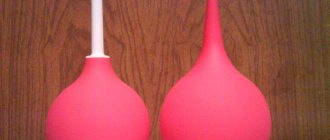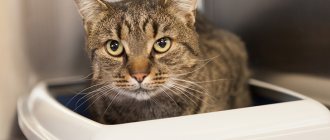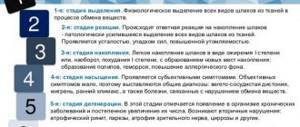The modern pharmacy chain offers a fairly extensive selection of medications that help solve the problem of stool retention. Unfortunately, this pathological phenomenon occurs in many people for various reasons.
However, no matter what they are, constipation must be treated, thereby helping the intestines get rid of the accumulation of fecal substances and harmful toxins. For this, doctors recommend a variety of remedies, among which microenemas for constipation are consistently popular.
Types of enemas
There are many variations of this procedure. Cleansing enemas are often done based on:
- warm water with a temperature of 40–42°C;
- soap - used for prolonged stool retention;
- salts are an effective remedy for hard stool;
- oils (linseed, sunflower, olive) – the procedure is useful for habitual constipation;
- vinegar with salt - used for chronic constipation;
- castor oil for constipation;
- Baking soda is sometimes used for constipation, as well as oats;
- medicinal herbs that help soften and quickly remove feces from the intestines.
However, it is worth noting that it is unacceptable to independently prescribe such a remedy for constipation in adults without consulting a doctor. An enema for constipation at home is dangerous and causes serious consequences if you do not know how to treat constipation correctly.
Possible consequences
Abuse of enemas is fraught with:
- The development of “lazy bowel” syndrome - the essence of this phenomenon is the pathological stretching of the intestinal walls and a significant weakening of intestinal motility, which occurs due to frequent exposure to fluid on the walls of the rectum. Constant mechanical stimulation contributes to chronic constipation . In the most severe cases, it comes to the point that independent (without an enema) bowel movement becomes impossible.
- Intoxication that can develop as a result of the dissolution of food breakdown products in the components of the solution used for their implementation.
- Introducing an imbalance in the composition of the intestinal microflora. Frequent infusion of liquids and medicinal solutions leads to the fact that most beneficial microorganisms are washed out of the intestines, as a result of which the patient experiences all kinds of gastrointestinal disorders (for example, chronic constipation and diarrhea).
Since the above-mentioned microorganisms produce a number of microelements and vitamins that are extremely beneficial for the human body, after they are washed away, its normal functioning is disrupted due to the resulting deficiency of these substances.
Enema for constipation at home
The main task of a cleansing enema is to flush out solid stool from the rectum and upper intestines. That is why such manipulation is widely used for both procotogenic and cologenic constipation. This type of hydrotherapy does not irritate the receptors of the intestinal mucosa.
In addition, a cleansing enema eliminates the negative impact on the tone of its walls:
- 1.5 liters of water with a temperature of no higher than 35°C is poured into the container.
- If the goal is to stimulate intestinal contractions, then use cool water (12–20°C). To relax the intestinal muscles, take water at a temperature of 37–42 °C.
- After the manipulation, it is recommended to lie down. This will help the liquid to be better distributed throughout the intestines, and will also soften hard stool.
Oil enema
Oil enema is one of the effective procedures that helps to get a positive effect. The success of treatment with this type of manipulation is achieved due to the fact that the warm agent relaxes the intestinal walls and envelops the solid contents present. It becomes slippery, which makes it easier to move towards the anus. If you are constipated, it is recommended to take an oil-based enema before bed. This approach will ensure natural bowel movements within 10–12 hours, without causing additional discomfort to the person. If after this there is no effect, what to do, the patient will have to urgently undergo a cleansing enema to quickly get rid of constipation.
Hypertensive enema
A hypertensive enema is used as an emergency aid when previous attempts have not yielded a positive result. This option is considered the fastest way to relieve proctogenic constipation. This type of manipulation for constipation is made from a concentrated solution of salt (table salt, sea salt or magnesium sulfate). The product helps to strengthen rectal motility and eliminate even severe constipation. In addition, it helps to draw out existing fluid from the intestinal walls. All this guarantees loose stools immediately after the procedure.
Hypertonic and oil enemas force the intestines to empty feces on their own. This effect is not observed during the cleansing procedure. The mechanism is that water simply carries feces out without affecting the receptors of the rectal mucosa and the tone of the intestinal wall.
Microclysters
Microenemas also help to cope with constipation. They are used to introduce medicinal drugs (aloe juice for constipation) into the rectum in small quantities (several milliliters). To carry out this procedure, a syringe is taken, onto which a soft catheter is placed, which tightly covers the tip of the syringe. This manipulation is preceded by a cleansing enema 30–40 minutes before the main therapy. The patient is laid on his side, a syringe pre-lubricated with Vaseline or glycerin is injected into him, then the necessary solution is injected, for which chamomile is most effective for constipation and other folk recipes.
How is the procedure useful?
An enema is a procedure in which medicinal, aqueous, oily and other solutions are administered transrectally into the rectum. Depending on the purpose of the procedure, it can be therapeutic, cleansing, laxative, etc.
This procedure is incredibly useful. It helps to successfully cleanse the intestines in cases of severe constipation or incomplete intestinal emptying. By removing accumulated feces from the body, an enema reduces their toxic effects, prevents the penetration of toxins into the bloodstream and ensures timely evacuation of food debris.
After the procedure, patients feel pronounced relief, which is manifested in the disappearance of spasms, heaviness and discomfort.
A cleansed intestine better absorbs nutrients and nutrition, which allows the body to become full faster, consuming smaller amounts of food to satisfy hunger. After an enema, the feeling of hunger is reduced, digestive activity is normalized, sleep is restored, and immune defense is strengthened.
How much solution is needed for different types of manipulations
- For an oil enema for constipation at home, the amount of material used should vary between 50–100 ml. The oily liquid is injected using a rubber bulb of the required size.
- For a hypertensive enema, the amount of solution is 100 ml. Liquid concentration 10%. Prepare a composition from the proportion of 2 tsp. salt per 100 ml of water. The action is also performed using a rubber bulb.
- A cleansing enema is carried out using 1.5–2 liters of plain water or a decoction that uses oats and Esmarch mugs.
Benefits of chamomile for the intestines
Our ancestors also noticed the healing properties of chamomile. This is not just a wildflower. Compositions prepared from this plant not only give the body vigor and strength, but also act as a kind of antiseptic. In rural areas, chamomile is used to combat colds and pathologies of the nose and throat. Products from this plant are actively used for douching and enemas.
Chamomile flowers have many beneficial properties
Chamomile-based compositions can:
- reduce gas formation;
- relieve the inflammatory process;
- have a calming effect;
- relieve pain.
The effect of chamomile on the intestines is difficult to overestimate.
Contraindications for enema
Despite the high effectiveness of manipulations to free the intestines from constipation, an enema for constipation at home has its contraindications. These include:
- Strong headache;
- renal and heart failure;
- general weakness;
- abdominal or inguinal hernia;
- stomach ache;
- high body temperature;
- stomach upset;
- bleeding from the rectum;
- stage III hypertension;
- diseases of the large intestine;
- recent heart attack or stroke, postoperative period;
- exacerbation of chronic diseases;
- in women, vaginal prolapse;
- nausea.
Also, a procedure in which oats or agave is used is undesirable for stress and fatigue, for women - during menstruation, pregnancy and breastfeeding.
Properties of chamomile
The entire value of the properties of chamomile comes down to its use as an antiseptic composition. The presence of essential oils and flavonoids explains the presence of an anti-inflammatory effect. It has also been proven to have a therapeutic effect on the smooth muscles of the bile ducts in pathologies of the intestinal tract and blood vessels.
Only positive effects of the medicinal plant on the intestinal tract were noted. In particular, digestion improves noticeably and appetite improves. If chamomile is combined with herbs such as yarrow, calendula, St. John's wort, then the wound-healing and antispasmodic effects will only increase.
With its rich composition, chamomile can replace an impressive list of pharmaceutical drugs. It has found wide use in the treatment of many diseases.
See also: how to use microenemas for constipation.
Important! Despite the impressive list of medicinal qualities, chamomile alone cannot completely cure the disease.
We have selected useful articles on the topic
The use of chamomile for a newborn from colic
18.05.2019
The best folk recipes for the treatment of duodenal ulcers
18.05.2019
How to cure intestinal cancer in unconventional ways
20.06.2019
Additional measures to ensure effect
Using a special exercise will help the intestines quickly free themselves from fecal stagnation. The manipulation is carried out before the enema:
- Place your feet shoulder-width apart in a standing position.
- Take a deep breath and then exhale forcefully.
- Next, hold your breath for a few seconds, while you need to tense your abdominal muscles. Then, with an energetic effort, pull the stomach inward so that a depression appears under the ribs.
- Place your hands on your hips, bend your legs slightly and lean your torso forward, but do not bend. This position raises the diaphragm.
- Holding your breath, remain in this position for as long as possible.
- Relax by resuming your breathing and standing up straight on your feet.
Before doing the first enema, when deciding how to get rid of constipation at home, use the exercise 1-2 times, after which it is recommended to increase the range of movements to seven. To ensure good flushing of the gastrointestinal tract with liquid, it is advisable to perform this exercise in different positions: sitting and standing, lying on your back, left side, right side, and also on all fours. To enhance the effect, before starting the exercise, drink several cups of water with salt. Use liquid at room temperature. A proper enema for constipation at home will help restore intestinal functionality.
What kind of water should I use?
The selection of solution is important:
- For the procedure, it is recommended to use water at room temperature ≈25-35°C;
- Distilled or boiled water is perfect;
- Water-salt or manganese solutions are also poured in;
- Enema with solutions of medicinal herbs such as chamomile, St. John's wort, celandine, etc. is effective.
The type of solution depends on the purpose of the event and is selected individually.
How to prepare the medicine?
Chamomile enema solution is prepared from dry or fresh raw materials (flowers). Pour 50 g of crushed flowers into a convenient bowl and brew them with a glass of boiling water. Cover the dish with a lid and leave for half an hour. The enema solution with chamomile for prostatitis must be filtered and poured into a clean container. The temperature of the rinsing solution should be 30-40 °C.
For a more concentrated solution, the infusion is kept in a water bath for 15 minutes. You can use a thermos to prepare the infusion. The raw material is poured into a flask and filled with boiling water. Leave for at least an hour, dilute with boiled water if necessary.











